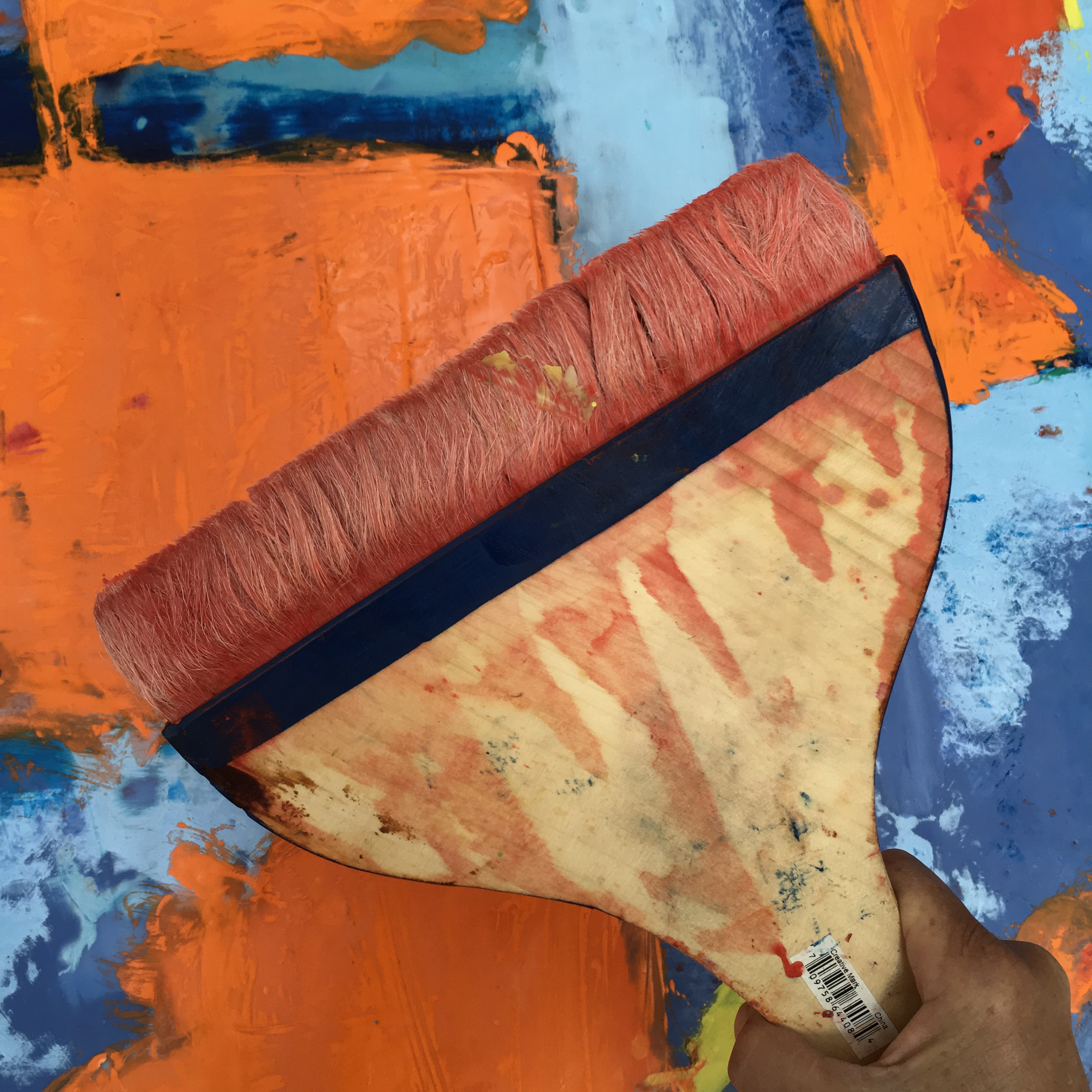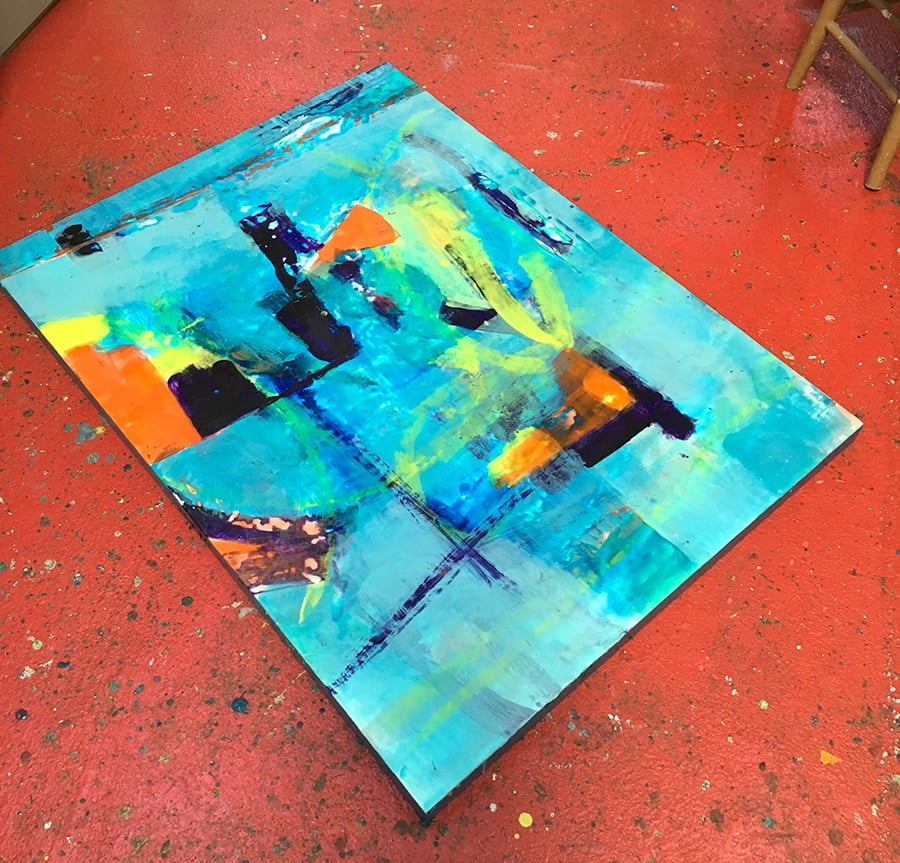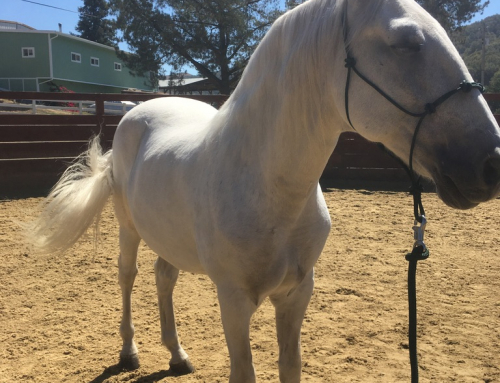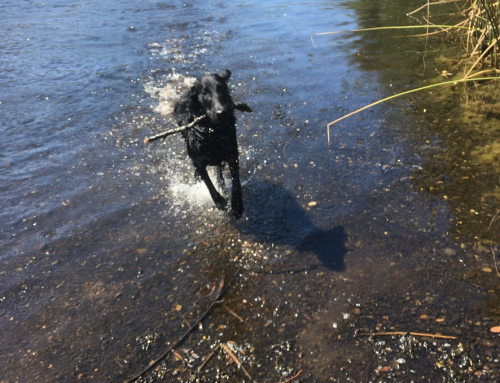 I was so proud of myself. Feeling good about getting into the studio everyday and having some completed work under my torch…
I was so proud of myself. Feeling good about getting into the studio everyday and having some completed work under my torch…
Until today. I walked into the studio and looked at my “finished” pieces and thought No Way. It’s not unusual to have pieces of incomplete work around the studio but I was puzzled at how in one day my perception changed so dramatically.
People often ask me:
How do you know when it’s done?
Let me take you through a little bit of my process. When the painting is larger than 24″ x 24″ I’ll put the panel on the floor and begin the work from there. The size of the panel determines how close or far I need to be in order to see what I’m doing. Small pieces are intimate and I can work with them on my table. I can clearly see what’s on the menu.
But take the unfinished piece below. It is 40″ x 30″ and has already gone through many iterations. On the floor I can walk around it and get a feel for how it is coming together; plus it shifts the stiffness of trying to create a “masterpiece” to I’m painting a piece of wood lying on the floor. Pressure release. I stand over the work and continue blocking out large shapes. I look for flow, contrast and surprise.
The image shows how I was too close to the painting and my brushes didn’t match the 1200 square inches in front of me. I was already into the details before understanding what the pieces was about. The self centered approach.

I searched for the big brushes.
How I know when it’s done.
Something stops me from continuing. My forward moving energy slows down as I see the pieces come together. Imagine twisting a kaleidoscope until the colored pieces fall into position that makes sense to you. It’s a feeling similar to being in an elevator that comes to an abrupt stop on the ground floor. End of ride. Time to exit and get on to the next destination. It’s not about being right or wrong.
What I have learned is that being done does not mean the end. A very distinct difference. What’s the difference between the end of a chapter and the end of a book? This is how I view a series of work. Maybe this is how Picasso felt about ending his Blue Period and moving into his Rose Period. He was done and moved on. An exhaustion of emotion led to the next interpretation of his surroundings.
What made today so different from yesterday?
It wasn’t the end of the ride. There were more edges to challenge and I was still on the elevator. Going up?
XOXO,
Francesca






